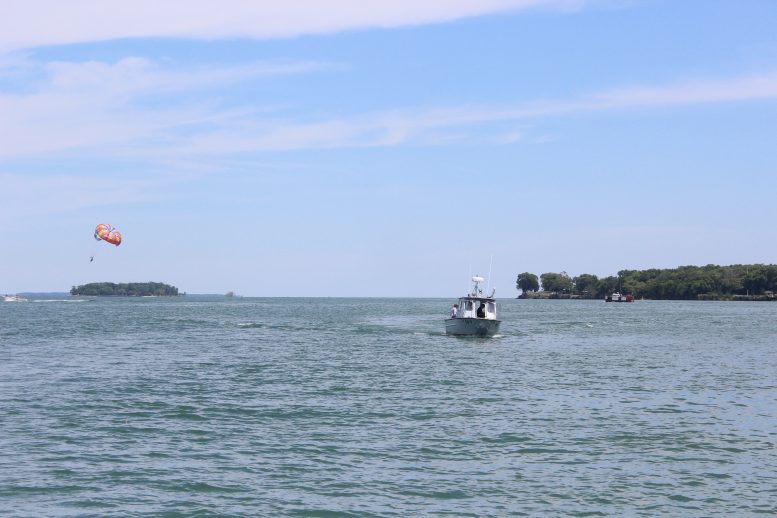By DAVID DUPONT
BG Independent News
An early prediction of how much algae will blossom in Lake Erie is showing a greater bloom this year than last.

Still, said Tim Davis, a researcher in BGSU’s Great Lakes Center for Fresh Waters and Human Health, as it looks right now the algal bloom will not be as severe as the record years of 2011 and 2015.
The most recent forecast issued Thursday (May 23) projects the bloom will be about 6 on a scale of 10, “noticeably greater” than 2018, which had a severity of 4, according to the Western Lake Erie Harmful Algal Bloom Early Season Projection released by the National Oceanic and Atmospheric Association.
“We should expect a decent type bloom based off these predictions,” said Davis, who just received federal recognition for his work. “What it does not predict is when it will start or how toxic it will be.”
Toxins made Toledo’s water undrinkable in 2014.
Heavy rains in April have pushed more phosphorus-based fertilizer from farm fields where it helps crops grow, into the Maumee River watershed, and into the lake where it promotes the grow of algae, some of which can become toxic. Animal waste is another major culprit.
Last year, Davis said, the bloom started in June instead of mid-July. It typically hits its peak in August, and can last into September. “Once initiated that bloom will last until the water temps cool off.” The trend, he said, is for the blooms to last longer.
The key factor is the water temperature in Lake Erie.
Once it hits 17 degrees Celsius, about 63 degrees Fahrenheit, is the ideal temperature.
The water temperature at Toledo, according to the National Weather Service, is 54.
The bloom is going to be producing toxins that are a public health threat, Davis said. People using the lake need to be wary. ”If you see a green paint-like scum, those areas should always be avoided.”
That scum is very dangerous.
“Until we see nutrient reductions we are going to see severe blooms,” he said. Reducing phosphorus feeding, he said, is a long-term process. These actions will diminish the size, volume and severity but not eradicate them.
“There’s this notion that it’s the scientists against the farmers,” Davis said. But the agricultural community “is invested in making these blooms less severe and shorter. There’s not a quick fix.”
Davis said he understands people are getting frustrated at the speed with which the problem is being addressed.
The passage of the Lake Erie Bill of Rights by Toledo voters is an expression of that frustration.
Federal and state governments are paying attention, not just to the Lake Erie area but nationwide. Every state in the union has algal bloom problems, Davis said.
“The best thing we can do is continue to work with agricultural community to use best practices,” he said. That takes time and money, and knowledge.
Researchers have “to make sure we’re giving the most scientifically accurate information we can.”





